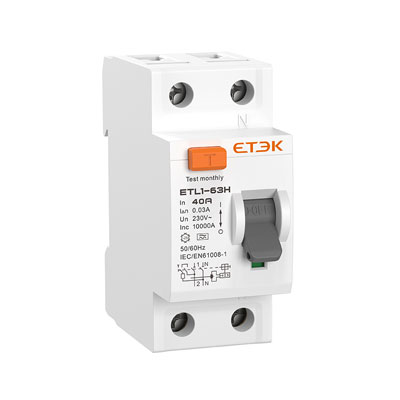A Miniature Circuit Breaker (MCB)—named for its compact size and role in "breaking" (interrupting) electrical circuits— is a vital electro-mechanical safety device. It protects circuits from damage caused by overloads or short circuits by automatically cutting off power when faults are detected, serving as a reusable alternative to traditional fuses in residential, commercial, and industrial settings. Unlike fuses that require replacement after tripping, MCBs can be easily reset manually, enhancing convenience and cost-effectiveness.

• Application: Designed for household and industrial AC power systems (50/60Hz), safeguarding lighting circuits, plug sockets, and appliances.
• Design Features: Optimized for sinusoidal current waves, equipped with arc extinction chambers to safely quench sparks during tripping.
• Ratings: Common residential ratings include 6A, 10A, 16A, with commercial versions up to 63A.
• Application: Used in DC systems such as solar installations, electric vehicles, and battery storage.
• Design Differences: Handles non-zero-crossing DC current, requiring specialized magnetic trip units and stronger arc suppression materials due to the absence of natural current zero points, which complicates arc extinction.
① Overload: Excessive load on a circuit (e.g., multiple high-power devices) exceeds the MCB's rated capacity, causing a bimetallic strip to overheat and bend, triggering gradual tripping.
② Short Circuit: A sudden surge from direct live-neutral contact activates an electromagnet, instantly tripping the breaker—often accompanied by a spark or audible "pop".
③Faulty Equipment: Wear and tear (loose terminals, weakened internal components) or aging can cause unexplained tripping without an apparent fault.
④ Rating Mismatch: Using an MCB with a higher current rating than the circuit's wire capacity risks delayed tripping, potentially leading to overheating and fire hazards.
• Overload Protection: A bimetallic strip (two metals with differing thermal expansion rates) bends when heated by excess current, mechanically tripping the breaker.
• Short Circuit Protection: An electromagnetic coil generates a strong magnetic field during current surges, instantly pulling the tripping mechanism to disconnect power.
• Reset Mechanism: After resolving the fault, simply flip the manual handle to "ON"—no component replacement is needed, unlike fuses.
|
Feature |
MCB |
Fuse |
|
Reusability |
Manually reset after tripping; no replacement required. |
Requires replacing the fuse wire after each trip. |
|
Arc Safety |
Enclosed arc extinction chambers reduce fire risks. |
Open fuses pose arc flash hazards during faults. |
|
Precision |
Accurate current ratings (e.g., 16A, 20A) for specific circuits. |
Limited to fuse wire thickness, offering less flexibility. |
MCBs are essential for modern electrical safety, providing reliable protection in both AC and DC systems. By understanding their differentiation (AC/DC types), common tripping causes, and operational advantages over fuses, users can ensure proper installation and maintenance—mitigating risks and enhancing circuit reliability in any setting.
GET A QUOTE